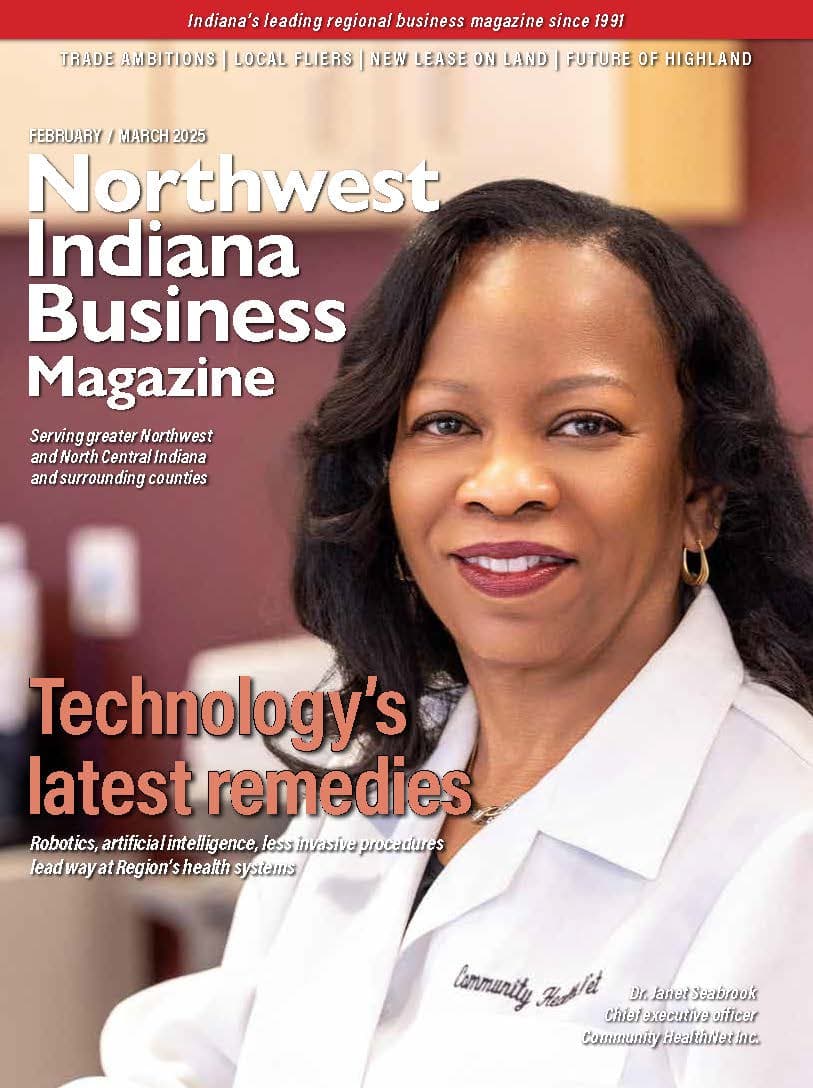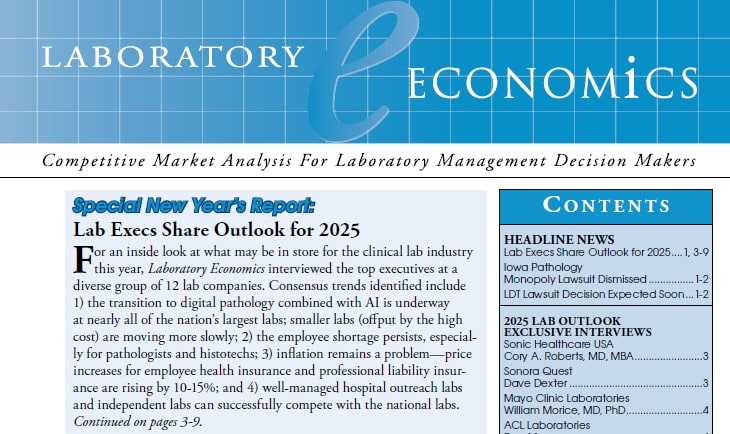Centralized Automation Benefits in Microbiology
Q&A with Cindy Keyak, MHA, MT(ASCP), SSGB
and Nadine Ali, BS, MT(ASCP)

MedicalLab Management: What is the driving force behind your laboratory’s microbiology practice?
Cindy Keyak & Nadine Ali: As has been common throughout the country in the last two decades, merging hospitals and health systems have enabled growth in laboratory diagnostics volumes (among other practice areas), which in turn have enabled many laboratories to adopt technologies that prior volumes could not easily justify. Our laboratory operations have followed a similar path; having formed in 1999, we began serving 6 hospitals with an overall goal of reducing costs for, and enabling access to, health care for our communities. After more than 20 years in operation, we now provide lab services to 34 hospitals. So, in addition to several other clinical services, we provide microbiology services to all our hospitals from a core, centralized laboratory.
We know that we must continue to find ways to offer broader and more advanced laboratory services moving forward, so benchmarking and technology acquisitions go hand in hand with our goals.
MLM: What testing services fall under the microbiology umbrella at your laboratory?
Keyak & Ali: In general, our microbiology labs perform all operations related to bacteriology, parasitology, mycobacteriology, and mycology processes. We also have begun to incorporate a molecular test menu, which is related to our microbiology workflow, but has its own special requirements. A new molecular platform will allow for the detection of resistance markers in positive blood cultures. This will decrease the turnaround to properly administer appropriate antibiotics for treatment of sepsis.
MLM: What platforms and instruments can benefit these types of testing?
Keyak & Ali: Relatively recent advancements in automating several aspects of clinical microbiology workflow have certainly benefitted micro labs of all types and sizes. There are now multiple instruments that can work in concert to quickly and efficiently process microbiology workloads. In our microbiology labs, we utilize the following platform types, among others:
- Automated specimen processors for preanalytical specimen management
- Automated specimen processors for incubation, imaging, and reading of culture plates
- Rapid microbial identification systems (MALDI-TOF)
- Additional ID/AST platforms
- Automated blood culture systems for bloodstream infections
- Automated mycobacterial detection systems for liquid culture and susceptibility testing
MLM: Can you briefly run through a typical microbiology workflow?
Keyak & Ali: A proper balance between advanced technology and skilled technologists, technicians, and laboratory assistants (along with management) is key. In our workflow, once specimens are received in microbiology, our laboratory assistants load those specimens onto the preanalytical specimen processor for culture set up. Plates are then incubated 18-24 hours before the first culture read. Once ready, a technologist screens the presumptively positive cultures for any growth or pathogens that require susceptibility testing. The technologist then issues a first day report based on those findings. Keep in mind that bacterial cultures produce results in an average of 18 to 72 hours depending on culture type, whereas fungal and mycobacteria cultures are held for 4 and 6 weeks, respectively.
MLM: Accordingly, what are the benefits of this centralized model?
Keyak & Ali: This centralized model reduces costs, helps standardize microbiology practices across organizations, and pools microbiology technologist expertise in one area. A common selling point is that increased testing volumes tend to allow for more expansive technology acquisitions. This is particularly true of automation used in microbiology. Because microbiology heavily depends on skilled technologists, taking advantage of automation or standardization in any operational aspect can be of benefit, not the least of which is because it allows us to focus our techs on tasks for which they are best suited. Furthermore, the process of evolving from a small number of tests to a large number begins to take automation for granted, and this should be taken advantage of as well.
For example, our preanalytical specimen processor automatically plates incoming specimens; a process that would be untenable given our sample load without that automation. It is inconceivable to imagine manually plating a large volume of microbiology specimens once a critical mass has been attained. We also can screen plates faster and utilize our offline incubators to ensure that further increases in sample volume will not necessarily require more technologist interaction.
Looking forward, this type of automation is beginning to incorporate a kind of artificial intelligence (AI) that applies algorithms to identify negative samples, which can then be pooled and reported out allowing us to review just the positive samples. Another example involves the use of chromogenic culture media in our processor, which are used for throat, MRSA, Candida auris, and vancomycin-resistant Enterococcus (VRE) cultures. In this case, an algorithm looks for color changes in bacteria to inform the tech of a presumptive positive for Group A Streptococcus, for example, based on automated ID. We can discard the negatives and give the techs a head start on these presumptive positives.
We also perform rapid identification directly from positive blood culture media, reducing the TAT from our previous process by 24 hours. If we identify a pathogen, we also set up a rapid susceptibility directly from the positive blood culture media. This enables us to provide physicians with treatment options 18 to 24 hours earlier than conventional susceptibilities from plate growth. Streamlining processes in this way is clearly essential for optimization.

MLM: How are specimens transported to and from the microbiology lab?
Keyak & Ali: This brings up an interesting point; raw specimens and blood cultures are largely transported by a courier service to the central microbiology lab. Depending on the level of specimen preparation technology at each hospital, some specimens are sent via temperature-controlled, insulated transportation containers. Curiously, these “incubated coolers” have been of great interest to colleagues and visitors to our labs. The containers involve a somewhat simple process of inserting a heating source that brings the temperature to 36°C, thereby enabling incubation for the cultures in transit. Prior to implementing our automated specimen processors, instead of sending raw specimens, each individual hospital would culture their own specimens, and then send the plates to us for processing (as mentioned, given our volumes, we could not culture specimens on plates manually). So, those cultured plates would be able to begin incubating in transit to our central lab.
Now, we do not use these containers as much due to our ability to automate plating and culturing at our central lab, but we do still use them for certain critical blood cultures or any type of body fluid (eg, spinal fluid), wherein the results TAT is critical. Again, depending on preanalytical technology, some sites do still plate their specimens so they can begin incubating in transport.
MLM: How can a centralized microbiology operation enable or improve daily quality management operations?
Keyak & Ali: The entirety of our microbiology staff shares various QA and QC operations throughout the day. Laboratory leadership, technologists, and lab assistants all have different roles and responsibilities, and of course participation in an approved proficiency testing program is a crucial part of our quality management systems. That said, there are specific quality benefits to having a centralized model for microbiology. Because we are performing most complex testing in our core lab, there is much less of a need for skilled technologists to be operating at the hospital sites. Without having to maintain certain CLIA licenses, the onus (and the cost) is no longer on the remote site to maintain the staff needed for complex testing, the technology needed, or the concomitant proficiency testing. This does not apply to all the hospitals we work with, but overall, focusing our knowledge and skill base in a central location has pooled our responsibilities and eased the pressure on our partner providers.
That said, most hospitals do perform their own STAT gram stains as needed, but these are reported as “preliminary findings,” and the sample is still reviewed at our core lab. Furthermore, we produce a blood culture contamination quality report that centralizes the follow up process so individual hospitals do not have to gather their own metrics. Antibiograms are another area wherein a centralized, group analysis can provide powerful information to hospitals looking for broad information (eg, by system or region) on the best antibiotics for ID physicians to utilize.
MLM: How can the microbiology lab interact with clinicians to improve internal operations?
Keyak & Ali: As microbiology and laboratory managers, it is vital to participate in as many group improvement meetings as possible, including any committees related to antimicrobial stewardship, infection control/prevention, and any relevant business-related meetings.
Likewise, brainstorming with physician and pharmacist colleagues throughout the hospital organizations is crucial to implementing best patient-care practices in the microbiology laboratory. Continue to discuss in regular meetings ways in which the microbiology laboratory can continue to standardize processes to the benefit of multiple practice locations.
MLM: What are the microbiology laboratory’s near-future plans for expanding into new instrumentation, automation, or methodologies?
Keyak & Ali: Among the microbiology lab’s primary plans for the near future include adding additional culture types to the automated culture incubation and work-up system. We also plan to utilize the MALDI-TOF system to identify a wider range of mold and mycobacteria, and expect to update our AST panels to add additional antibiotics to the testing menu.
Keep in mind that technological interfacing is important. Clinical microbiology operations have traditionally relied so heavily on manual interactions, but through the latest automated instruments, we can create and maintain interfaces through our LIS. Building an interface with our MALDI-TOF instrumentation to autoload ID information into a standard report is an additional project.
Fundamentally, we are always looking for ways to reduce human error and improve TAT at the same time. In doing so, it is important to stay on top of what your vendors are doing to improve the services you provide. Most clinical laboratories want to remain innovative and aggressive with technology implementations. Yet, as always, be sure to spend the appropriate amount of time vetting new technologies to ensure they will truly benefit your operations.






